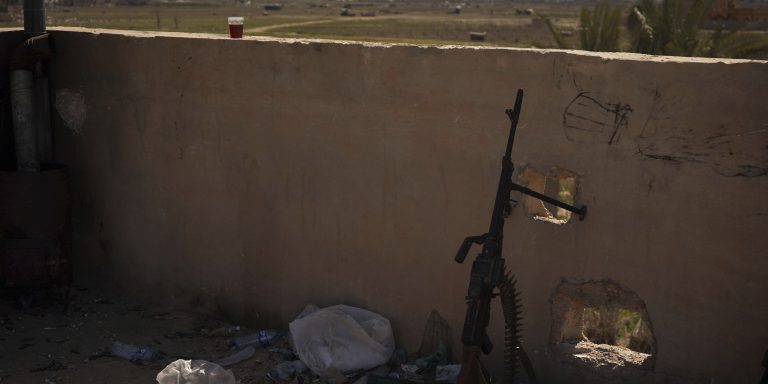Bottom Line Up Front
- A host of factors need to be considered to assess and measure the success of transnational terrorist organizations, including intent, ability to mobilize, operational environment, and organizational capability.
- According to the most recent report by the UN Monitoring Team, al-Qaeda’s “appetite for external operations had increased,” and some battle-hardened militants operating in Syria, particularly those from Central Asia, “retained external ambitions.”
- Many counterterrorism analysts would likely suggest that the Islamic State Khorasan Province (ISKP) remains the most dangerous terrorist group operating today, demonstrating both the intent and capabilities to conduct external operations (EXOPS).
- In a world of finite resources, with the U.S. and its allies focused on the war in Ukraine, the ongoing conflict in Gaza, and myriad other foreign policy priorities, maintaining focus on counterterrorism sometimes falls off the list of top-ranked priorities.

Western counterterrorism analysts are frequently asked to evaluate the terror threat landscape and assess which terrorist groups are the most dangerous. In many ways, this gets to the heart of the question—how do we accurately assess whether a terrorist group is a success, or failure, or something in between? For most Western countries attempting to combat the threat posed by jihadist groups and violent Shia extremists, including proxies in Iran’s ‘Axis of Resistance,’ what matters the most is the ability to conduct external operations (EXOPS) with a high body count. However, lethality cannot be the single measure of a group’s success, although killing civilians in terrorist attacks is the most egregious thing a group can do. But in the West, it seems as if lethality of Westerners is the sole measure that policymakers consider.
Al-Qaeda’s September 11, 2001, attacks in New York, Washington, D.C., and Pennsylvania killed nearly 3,000 Americans. The group has not been able to come anywhere near being able to replicate such an attack, due in large part to the relentless counterterrorism campaign led by the United States and its allies. But al-Qaeda still exists, seeking to adapt and evolve, at home in Afghanistan, and abroad, where its myriad affiliates and regional branches wreak havoc in sub-Saharan Africa, the Arabian Peninsula, the Indian subcontinent, and elsewhere. Jama’at Nusrat ul-Islam wa al-Muslimin (JNIM), al-Qaeda’s branch in West Africa, was the most lethal terrorist organization in 2024, and its affiliate in Somalia, al-Shabaab, has shown its ability to mobilize foreigners to join its ranks. According to the most recent report by the UN Monitoring Team, al-Qaeda’s “appetite for external operations had increased,” and some battle-hardened militants operating in Syria, particularly those from Central Asia, “retained external ambitions.” Beyond killing civilians, al-Qaeda also hoped to lure the United States into invading Afghanistan, a goal it achieved weeks after the attacks of 9/11.
Al-Qaeda has been eclipsed, at least in terms of notoriety, by the Islamic State (IS), which rose to infamy by engaging in extreme acts of violence, including beheadings, immolations, and drownings of their captives. These heinous crimes were broadcast by the group in its propaganda, which helped it recruit tens of thousands of foreign fighters from dozens of countries. Still, the Islamic State’s so-called caliphate was defeated in the spring of 2019, and now the group resembles al-Qaeda in similar ways. It retains a core organization of fighters but relies heavily on a transnational constellation of franchise groups dispersed geographically, such as the Sahel, Afghanistan, Somalia, Mozambique, and other global hotspots. Some of these groups have thousands of fighters under arms, cultivate lucrative revenue streams from a diverse portfolio of illicit activities, and control massive swaths of territory. Taken together, these are indicators of success.
In the study of insurgency, there is an old adage that insurgents win simply by not losing. For terrorist groups, there is a higher bar of success. These groups must be able to demonstrate potency, and this is typically achieved through terrorist plots and successful attacks. The Sahel is most deeply impacted by terrorism in recent years, measured by the number of incidents, fatalities, injuries, and hostages, according to the Global Terrorism Index. The groups responsible for so much death and destruction in sub-Saharan Africa include al-Qaeda’s Sahelian branch, JNIM, as well as the Islamic State Sahel Province (ISSP); al-Qaeda’s East African affiliate al-Shabaab and the Islamic State Somalia (IS-S) in the Horn of Africa; and the Islamic State Central Africa Province (ISCAP), which has been highly active in the Democratic Republic of Congo (DRC).
Western countries, including the United States and France, have drawn down their counterterrorism footprint in Africa, perhaps complacent that, while terrorist groups continue to kill civilians in large numbers and destabilize African governments, the threat has remained chiefly confined to Africa, at least for now. But intent is also something that can be misdiagnosed. In the lead-up to the Christmas Day 2009 al-Qaeda in the Arabian Peninsula (AQAP) underwear bomber plot, the conventional wisdom was that AQAP remained strictly a regional threat, not a transnational one. Moreover, many analysts dismissed al-Shabaab’s transnational ambitions until a Kenyan al-Shabaab operative was discovered in the Philippines training for a 9/11-style aviation attack. Recognizing such threats, the Trump administration has launched dozens of airstrikes against jihadists in Somalia so far this year, determined to degrade al-Shabaab and IS-S.
Nevertheless, many counterterrorism analysts believe that the Islamic State Khorasan Province (ISKP) remains the most dangerous terrorist group operating today, stemming from its intent and capability to conduct EXOPS, particularly in the West. In 2024, ISKP demonstrated its capabilities by launching attacks in Türkiye, Iran, and Russia, with numerous disrupted plots in Europe, including against the Paris Olympic Games and another targeting a Taylor Swift concert in Vienna, Austria. The group also repeatedly threatens attacks in the West, including in the United States, and there are growing concerns that with the shift in focus from counterterrorism to great power competition, as well as recently announced cuts in both funding and personnel across the U.S. intelligence community, the U.S. could remain vulnerable to attack. On New Year’s Day, a homegrown violent extremist motivated by the Islamic State launched a terror attack, killing fifteen people and injuring dozens more.
If al-Qaeda, the Islamic State, or any of their respective affiliates do succeed in launching a spectacular attack on Western soil, it would not necessarily qualify it as ‘successful.’ Most likely, it would spur a Western military campaign dedicated to decimating its leadership and removing its safe haven, as occurred in the aftermath of 9/11 and the establishment of the Islamic State’s caliphate. In the cases of al-Qaeda and IS, these campaigns led to their decentralization and franchising, causing an endless cycle.
The median lifespan for most terrorist organizations is between one and two years. So, if longevity is a metric for a terrorist group’s success, then groups like al-Qaeda and Lebanese Hezbollah are outliers, rare in their durability and resonance. Another way to judge a group’s viability is by whether it has achieved its stated objectives. By most measures, Hayat Tahrir al-Sham (HTS) has done so, toppling the Assad regime in December and now in charge of governing Syria, a Herculean challenge that the group is attempting to manage. In the end, if a group like HTS seizes power and transitions away from terrorism and toward governance, it is unclear who wins. There are many voices from Washington to Brussels who view recent developments in Damascus as positive. In contrast, others remain wary of Syrian interim leader Ahmad al-Sharaa’s true intentions, given his recent past as the leader of al-Qaeda’s Syrian affiliate, Jabhat al-Nusra.
In a world of finite resources, with the U.S. and its allies focused on Iran and its proxies, the war in Ukraine, the ongoing conflict in Gaza, and myriad other foreign policy priorities, maintaining focus on counterterrorism sometimes falls off the list of top-ranked priorities. But these groups will remain aggressive in looking for opportunities to strike Western interests abroad, including by targeting embassies, sporting events, concert venues, tourist destinations, or other soft targets where large numbers of civilians are known to congregate. Additionally, with years of practice, they will continue to be able to effectively leverage grievances in slick propaganda materials that circulate widely, exploiting news cycles and major global events to radicalize and even instigate attacks and hate crimes.
The Bush administration’s decision to label America’s post-9/11 military campaign to destroy al-Qaeda as “the Global War on Terrorism” or GWOT, arguably distorted the nature of the terrorist threat. Terrorism itself is a tactic, not a group, a movement, or an organization. Wars end. Accordingly, terrorism will never end; it will merely ebb and flow in different regions of the world in response to a confluence of different factors. Despite official declarations from governments that they will never ‘negotiate with terrorists,’ they do. The cat-and-mouse game between terrorists and the states they threaten is an ongoing negotiation, while the tools employed can oscillate between kinetic and non-kinetic, or sometimes both simultaneously.
